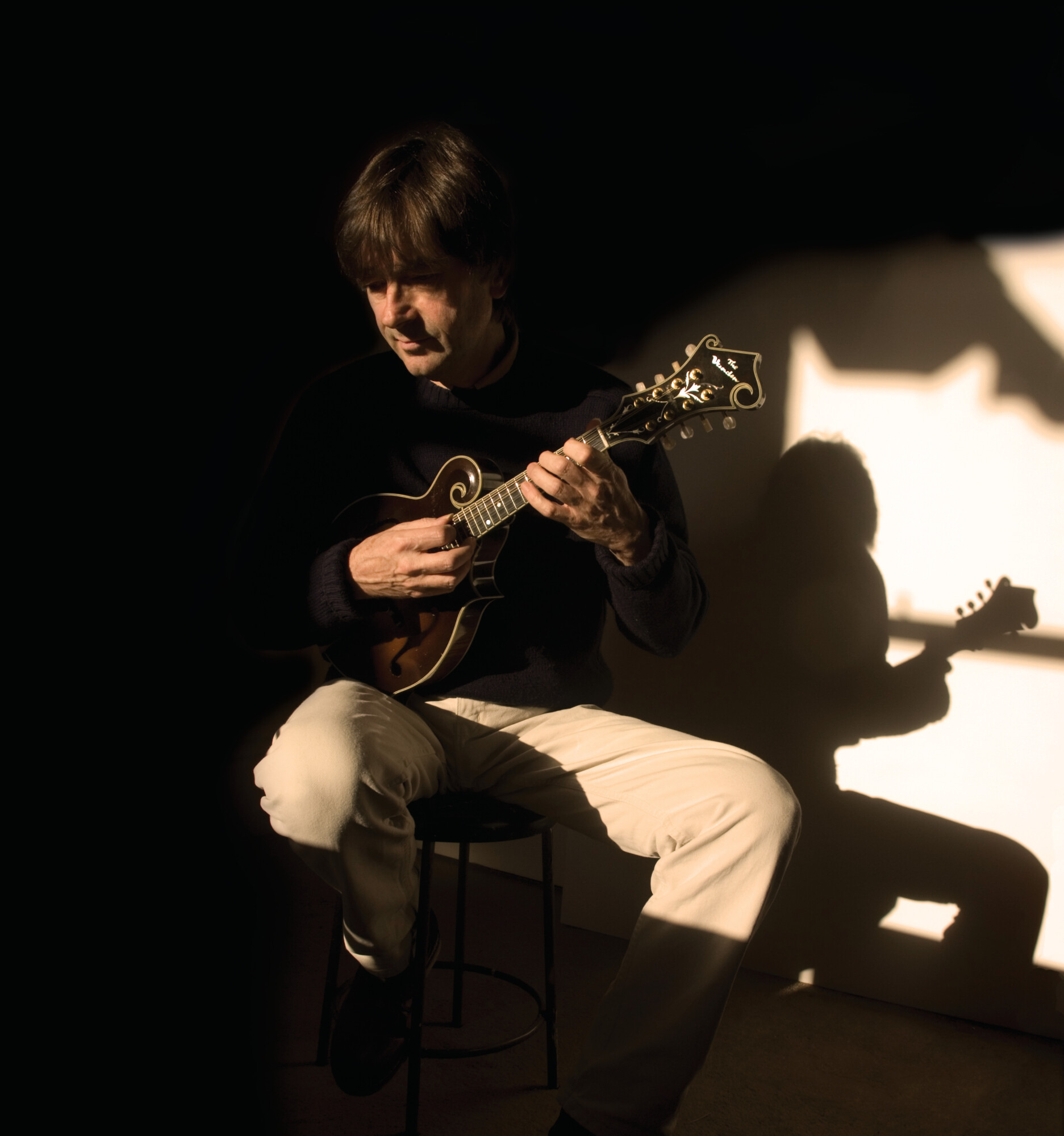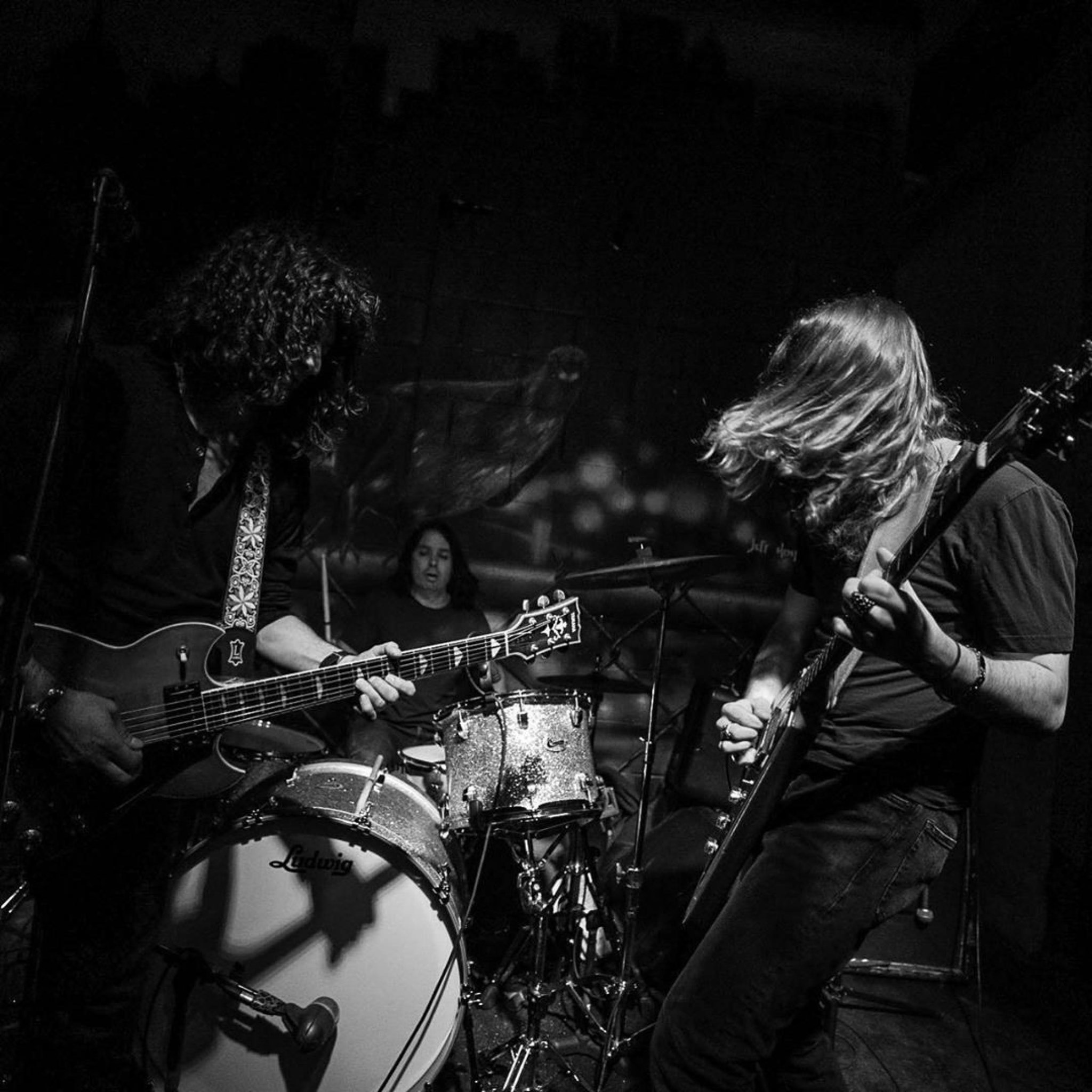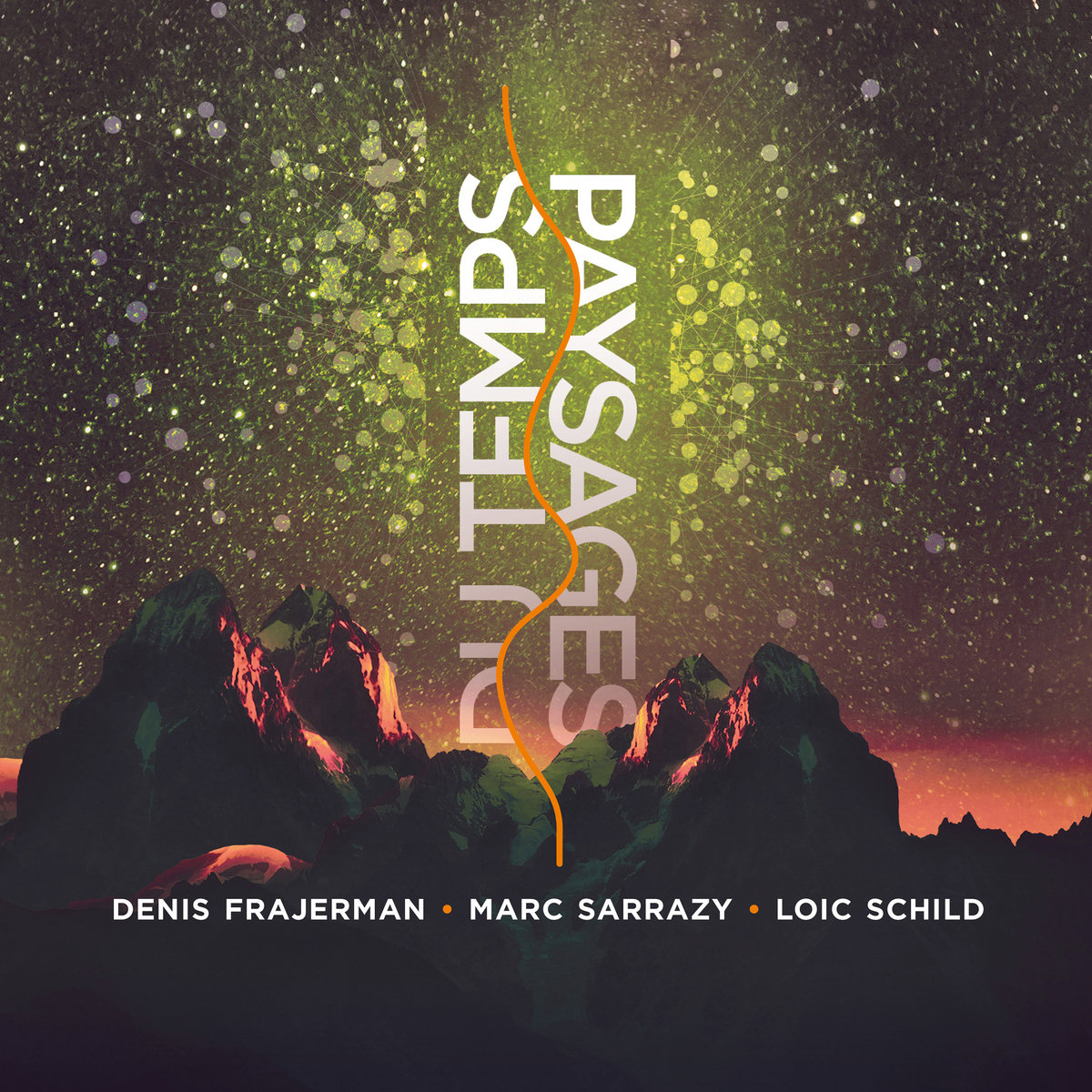Simon Mayor | Interview | New Album, ‘Carolan, Fantasias on Themes by Turlough O’Carolan’
Simon Mayor is one of the world’s leading mandolinists as well as a fine fiddle player, guitarist, composer and wit. He recently released a brand new album, ‘Carolan, Fantasias on Themes by Turlough O’Carolan’.
“I remember well the first time I heard the music of the Irish harper and composer Turlough O’Carolan (1670 – 1738). It would have been 1973 and the Irish group Planxty were playing at Reading University Folk Club. As a student haunt, it was one I vastly preferred to the lecture hall or seminar; Russian social thought of the 18th century was never as exciting as this! But let’s not digress. Planxty had been booked by Hilary James, who – no coincidence here – features on this recording.”

“There’s something special about a sound coming just from a wooden box”
Would you like to share what inspired the concept based around Turlough O’Carolan?
Simon Mayor: It was a process that built over many years. I first heard Carolan’s tunes played by Irish musicians when I was a student in the 1970s. I found his music had an immediate appeal because the melodies were so strong; it also intrigued me because it lay somewhere between traditional and baroque classical in flavour. Over the years, purely for my own amusement, I arranged many of his tunes for solo guitar. Although I’m not a classical musician, I took more of a classical than a folky approach, making a point of using only standard tuning or dropped D (most folk players who arranged Carolan would use DADGAD or an open major chord).
In 2015 I began to regularly host residential workshops for mandolin players, which continue to grow in popularity. It struck me that because Carolan’s tunes are mostly fairly simple, they would make excellent material for ensemble playing if I wrote parts. I had already arranged Si Bheag Si Mhor and Lord Inchiquin for my mandolin quartet The Mandolinquents, but I began to arrange many more as duets, trios and quartets. A couple of mando-bassists would regularly attend the workshops, so I wrote bass lines too, and eventually this year offered a couple of mandolin weekends based exclusively on Carolan’s music. Originally it was only going to be one weekend but it sold out so I offered another and that sold out too! It seems Carolan is even more popular than I had imagined.
I realised I had accumulated so much basic material that an album seemed the obvious thing to do. So, amazingly, it was a project that incubated for about 50 years, but by the time I recorded it I felt I knew Carolan as a composer very well.
Would love it if you could share what the creation process in the studio is like?
Because I had the raw material with the solo guitar and mandolin ensemble arrangements, I originally thought it would be a very simple album which I could record in a day or two. However, as recording progressed, my partner Hilary James (who was producing, singing and playing basses) and I would often say “add a violin” or “that needs a bass” or whatever, and the arrangements would become more complex. We then decided that since extemporisation was commonplace in the baroque era, there was no reason not to apply it to Carolan. I was already, of necessity, creating my own harmonic progressions so this seemed a logical step to take. Carolan never notated his own music because of his blindness. He died in 1738 and it was only many decades later that people archived his works from the aural tradition. Even then, his own harmonies were never notated, only the simple melody lines.
So a few days into recording, the whole idea changed from putting out the basic arrangements for solo guitar or mandolin quartet to treating the melodies as a basis for musical exploration. In one way this was akin to how a jazz player would play a tune, then jam round the chord sequence before playing the tune again. In another way it was akin to a classical composer developing a theme. To give one example, in Lord Inchiquin I created a section where the whole tune was transposed from a major to a minor key, then used the new minor key harmonic sequence as a basis for variations. Elsewhere, I would also incorporate key changes and pull tempos around a lot. Nothing became off-limits, but I hope I treated it all with respect.
Hilary and I have had our own studio for most of our career, so fortunately there was no time pressure. In some cases we would record different arrangements, or at least ideas and then leave them for a week, listen again, re-evaluate with fresh ears, keep some ideas and ditch others. A lot of the mandolin parts were improvised but the violin parts, in particular the string quartets, were worked out on paper first. Occasionally we would move sections around within the recording software and create arrangements on the computer; all that is very easy with digital recording.
We decided to use just one session musician, partly because I love the cello, and partly because we know an exceptionally good cellist, Florence Petit. I really enjoyed writing the parts for her.
How do you usually approach music making?
This is such a broad question. The short answer is that Hilary and I have never played anything just for the money, we have only ever played music we genuinely enjoy, and have been fortunate enough to make a living doing so. Our tastes are very wide, and Carolan is just part of that. The repertoires of the duo and our mandolin quartet The Mandolinquents are very eclectic. We also have an occasional band called Slim Panatella & the Mellow Virginians which does a mix of country, bluegrass, Western swing and even a bit of Swiss yodelling. More recently we’ve been playing with Florence Petit and classical guitarist Elias Sibley concentrating on folk, classical, my own compositions – and Carolan.
I’ve rarely played electric instruments. I love a lot of rock music, but I’ve always thought I function best as an acoustic musician. There’s something special about a sound coming just from a wooden box.

Tell us about some of the early influences that led to mandolin.
I’d been playing the guitar for a few years in my early teens, but not to a particularly high standard; I’d just been strumming a few chords and singing folk songs. I’d been aware of the mandolin as an instrument because my cousin had one, although he never played it. He was actually a very good guitarist, but the mandolin was lying around the house whenever we visited. Later in my teens a school friend played me a record by mandolinist and fiddle player Dave Swarbrick called ‘Rags, Reels & Airs’. Swarb had not only dexterity but individuality, and I’ve always thought that individuality is a musician’s greatest asset. His playing was somehow full of joy, even on a slow air although that may sound like a strange thing to say. Incidentally it was a huge honour when Swarb asked me to play mandolin on one of his own albums some years ago. I asked him why he needed me, but he was adamant. When I heard Rags, Reels & Airs I decided to take up the fiddle and mandolin immediately. I would practise every waking hour! In retrospect, I must have driven my parents insane because we had a very small house.
As a student, I saw the Irish folk band Planxty perform what must have been one their first ever gigs in the early 70s, and have been a lifelong admirer of Andy Irvine ever since. There’s a real beauty to the lines he plays behind songs. About the same time, I heard the Vivaldi mandolin concertos played by Takashi and Sylvia Ochi on a Deutsche Grammophon recording, and also got a disc by a classical mandolinist called Hugo D’Alton. I realised the instrument could play in a style totally different from folk musicians like Swarb or Andy Irvine. The next moment of mandolin discovery came in my early 20s when I heard American players. The bluegrass scene is small in England but I got to know a few musicians who introduced me to the likes of Andy Statman (sensational!), Bill Monroe (of course!), and David Grisman, whose improvisatory style, heavy on syncopation, I found particularly fascinating. Nobody sounds quite like him.
You regularly tour with long-time partner Hilary James. What’s the latest from you two? Can you share some words about the fantastic, ‘When Summer Comes Again’.
‘When Summer Comes Again’ is still our most recent duo recording. It was our lockdown album and was a mixture of new material we’d worked on during lockdown and some recordings we’d had in store for years. I’d first recorded The Buttermere Waltz back in 1991 on my ‘The Second Mandolin Album’. It’s always been a huge favourite on gigs and Hilary suggested revisiting it, but on violin rather than mandolin. After the album was released, we were in the north of England and we decided to go to Lake Buttermere to make a video.
It was a cold, grey day and we did about thirty takes. My fingers and nose went numb with cold, but the lake and mountains looked dramatic. We also had a lovely live recording on mandolin and guitar with both audio and video, so we put that on as a bonus track.
Hilary usually sings some blues and swing on gigs but the material on this album is more the folk side of our repertoire. Sumer Is Icumen In is probably the most heavily produced track we have ever recorded. It was the 900th anniversary of the founding of Reading Abbey (where we live) and the manuscript for the song was found there in 1261. It’s the earliest known written example of secular, polyphonic (harmonised) music. There are two classical tracks: Tchaikovsky’s Barcarolle is my mandolin quartet adaptation of a piano piece from his suite The Seasons. Al Mio Bene is one of Hilary’s favourites by JC Bach (son of the more famous JS). Perhaps the most unusual track is the reading of my poem The Stick. In 2018 we published a book called Of Death And A Banana Skin, a collection of my poetry and anecdotes with Hilary’s illustrations. The Stick, taken from that book, is a true tale of a seemingly inconsequential hike with a windfall walking stick provided by Mother nature. We set it against a waltz I’d written.
The album is really a statement of where we’d got to in 2021. In some ways it can be viewed as a sampler even though none of the material had been issued before, but we still wanted to make it hang together as a whole, and spent a considerable amount of time worrying about the running order, which I know is an outdated concept in these days of random play, but we do hope people will just put it on and leave it playing in the intended sequence.
What else currently occupies your life?
Playing table tennis and hiking.

Thank you for taking your time. Last word is yours.
The first year out of lockdown was very busy with gigs; 2023 is a little quieter, but I have been hosting more mandolin workshops, and Hilary and I are looking forward to visiting Canada soon. I’ll also be playing two nights at Wembley Arena in September as a mandolin soloist with The BBC Concert Orchestra, playing music from the Studio Ghibli films by the Japanese composer Joe Hisaishi.
Klemen Breznikar
Simon Mayor Official Website / Facebook / Twitter / YouTube




